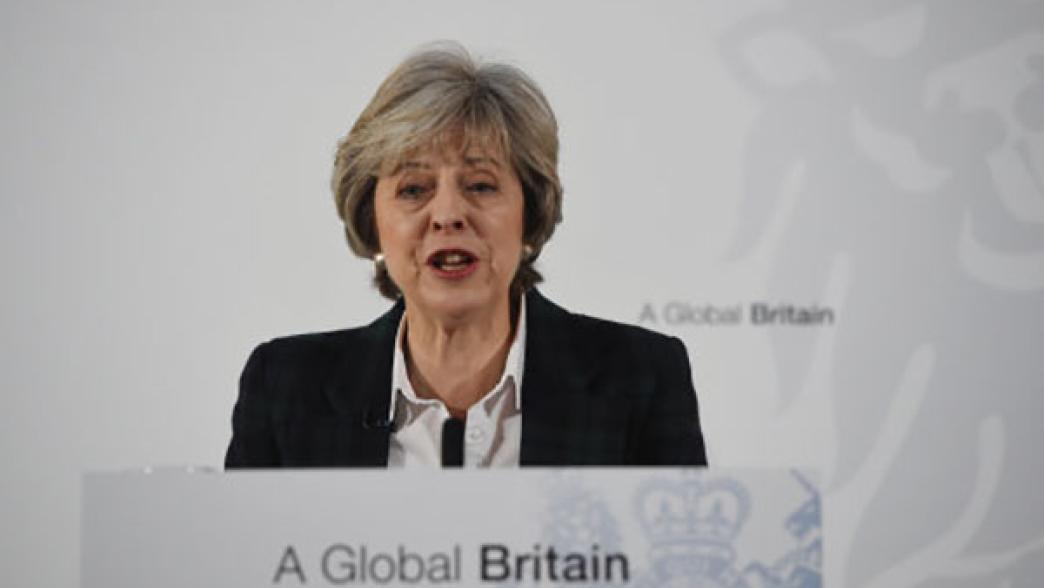
The Prime Minister’s speech will be interpreted as the opening exchange in the Brexit negotiations. Marking that speech against the best practice of international negotiations, Oliver Ilott says it will help her to get a better deal.
Setting out objectives before negotiating makes sense
Trade negotiators speak of the need to “get your text on the table first”, anchoring the ensuing dialogue in your own proposals. By becoming more specific about what Brexit means, Theresa May has taken a step in that direction.
The Prime Minister has set out some of her Brexit negotiating objectives: she will seek to complete a “comprehensive” Free Trade Agreement in two years, one that involves some kind of customs agreement with the EU but leaves the UK free to pursue its own deals with other countries. The UK will seek to control the number of EU migrants and to leave the jurisdiction of the ECJ.
Publicising these objectives is good practice – it allows Theresa May to “frame” the negotiations, creating a set of expectations about the outcome of Brexit that will anchor the discussion that follow.
And Theresa May knows her bargaining chips
Knowing what the other side wants, and what you might offer, is crucial to successful negotiations. While the speech focussed on what the UK would want from negotiations, there is also plenty of material on what it might offer (or, what it might threaten to withhold). The PM clearly sees the UK’s security capability as an asset and, crucially, does not rule out some form of future payments to the EU budget.
As negotiations progress, Theresa May will add nuance this position, recognising that there is not a single “EU interest” to be satisfied, but a multiplicity of interests and constituencies which can be persuaded, cajoled or bought off using bespoke offers.
Those negotiating with the EU have always pursued this kind of “divide and conquer” approach: when Peru challenged the EU’s labelling practices, it allied with a prominent UK consumer group, fragmenting the EU’s position and undermining the EU’s argument that the practises were in consumer interests.
Emphasising the UK’s willingness to walk away from negotiations increases bargaining power
Theresa May emphasised that “no deal” was better than a “bad deal”. This was a clear attempt to increase the UK’s bargaining power by signalling that the UK was willing to walk away from negotiations. After all, the UK’s bargaining chips aren’t really “bargaining chips” if the UK cannot afford not to play them.
However, convincing EU negotiators that the UK is willing to walk away from negotiations may take more than just words. There major questions about how the UK would manage customs, immigration and licensing arrangements in the result of a ‘sudden Brexit’ as a result of a failure to agree a deal. Whilst negotiations are taking place in Brussels, Theresa May needs to be solving these problems at home, not just as a matter of contingency planning but as a way of strengthening her hand at the negotiating table.
Giving Parliament the final say would normally strengthen a negotiator’s hand – but given the fact that rejecting a deal might lead to no deal at all, (and the fact the ratification process is so much more complex for the 27) confirming this will not have added to her bargaining power.
The process of negotiations will influence the outcome
Perhaps the most ambitious aspect of Theresa May’s speech was the claim that the UK would conclude its new Free Trade Agreement with the EU inside the two-year Article 50 negotiating window.
She envisaged that this new relationship would then be “phased in” over time. This is different to previous talk of an “interim deal” that would tide things over while negotiations continued, overrunning the two-year Article 50 window.
This particular timetable may prove ambitious – a deal that is as “comprehensive” might well touch on issues where responsibility is shared between the EU and its member states (such as transport, or portfolio investment). In that case, the deal might be subject to the EU’s long and tortuous sign-off process involving 27 national parliaments and 11 regional assemblies, rather than the QMV required for a deal on the areas where there is exclusive EU competence, putting the ambitious timeline in doubt.
The Prime Minister might need to think about how to finesse this process. Nevertheless, she is right to put process, as well as outcomes, in her list of objectives, framing expectations.
And then there's Whitehall
What today’s speech didn’t touch on are the tools that Theresa May will use to make this happen – the negotiating team, the resources for relevant departments and the decision-making process inside Cabinet. A clean Brexit cannot be delivered by speeches alone – it needs a Whitehall machine that is fit for purpose.
Read our Brexit Brief on what the Prime Minister's speech means.
We will be returning to these issues, and the principles of good negotiations, in a paper next month.
- Topic
- Brexit